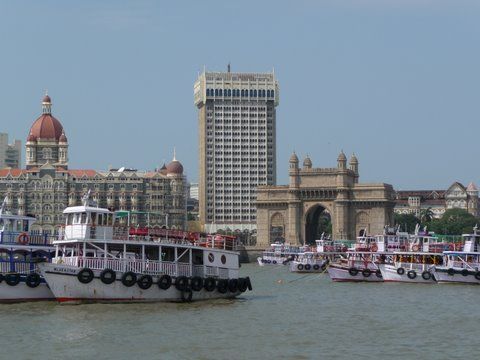We arrived last Wednesday in Mumbai, formerly Bombay and India's financial capital, on the Asian leg of Project Patchwork, our year-long quest for examples of multicultural societies where people of different creeds seemingly live together peacefully. Why Mumbai? One may well ask: A year ago ten young Pakistani gunmen glided unseen into this great port and in a three-day rampage slaughtered at least 170 Hindus, Muslims, Christians and Jews, purportedly in the name of Islam. And we arrived on the eve of the first anniversary of the November 26-29 bloodbath.
Yet we quickly learned that there is little new Hindu-Muslim tension. "Most people see the killings as an act of foreign aggression," we were told by Naresh Fernandes, the editor in chief of Time Out Mumbai. "Things have been calm locally during the last four or five years, and the real dispute nowadays is about linguistic nativism." He was referring to a bizarre dispute over the politically and legally correct language to be used by an elected lawmaker in taking his or her oath of office.
Most native-born Mumbaikars speak Marathi, and a calculated storm arose in the city's legislative assembly when an incoming opposition lawmaker from neighboring Uttar Pradesh took his oath in Hindi, India's most widely spoken language. For this offense, he was roughed up by Marathi-only militants linked to a fundamentalist Hindu party, the MSS (Maharashtra Navnirman Sena) led by Raj Thackeray, who regards migrant workers from other Indian states as hostile aliens. The subtext for language is jobs. The MSS first targeted polyglot Tamils, then Muslims, and currently northern newcomers. As the furor mounted, Thackeray tellingly upped the ante by demanding that in Mumbai all job seekers at the State Bank of India had to be fluent in Marathi. And this just as the SBI says it needs 20,000 new clerical employees.
For Thackeray and his linguistic police, it matters not that India now recognizes twenty-two languages, and that one has a constitutional right to take his legislative oath in the official language Hindi. Watch the video here. Nor does it matter that Thackeray's own daughter studies in an English-language school, and that eight of his thirteen party members in the assembly also send their offspring to English-medium schools and colleges. The point is to churn up a furor over everything and anything that might offend a Marathi-speaking Hindu. When a popular film, "Wake Up Sid," erred by referring to "Bombay," (a fundamentalist government had renamed it Mumbai in 1995) in order to get it released an apology appeared on multiple frames of the film. Textbooks appear in which history is conjured to suggest that only Hindus were indigenous, all other creeds being alien invaders. This process is called "saffronization," we were informed by Ram Puniyani, an astute critic of communal politics, saffron being the Hindu's sacred color. Click here for more information.
All this in a sprawling metropolis undergoing a surge in population, which now tops 18 million, making it a mega-city with mega-problems. Quality of life has plunged by practically every measure: crime, health, schools, housing, transport, drugs, pollution, sewage and undrinkable water. While weaving through the suffocating traffic in the central Mumbai, we saw a sign pointing to the judicial chambers of a "Court of Small Causes." How better to describe one's impression of the local political scene.



